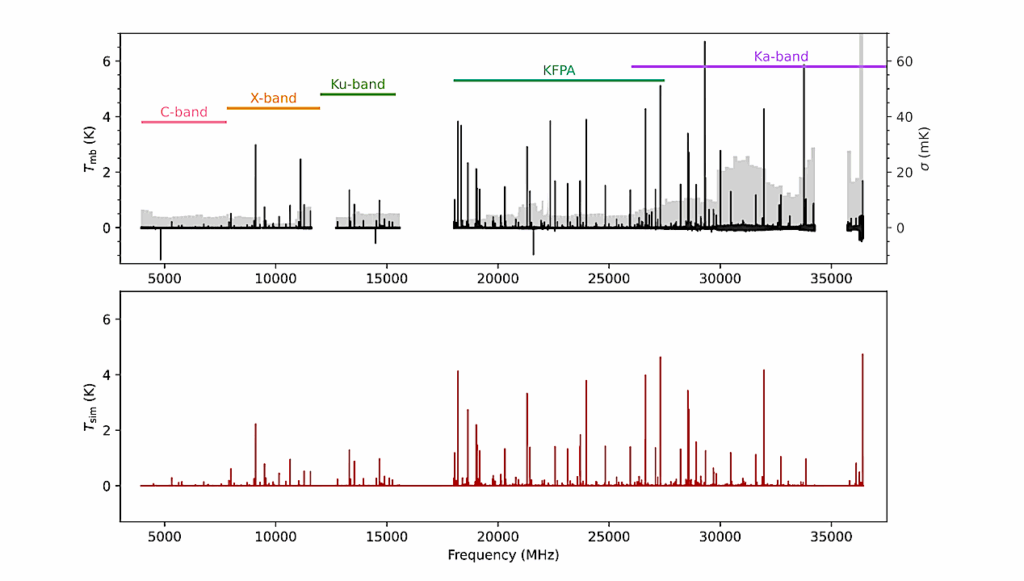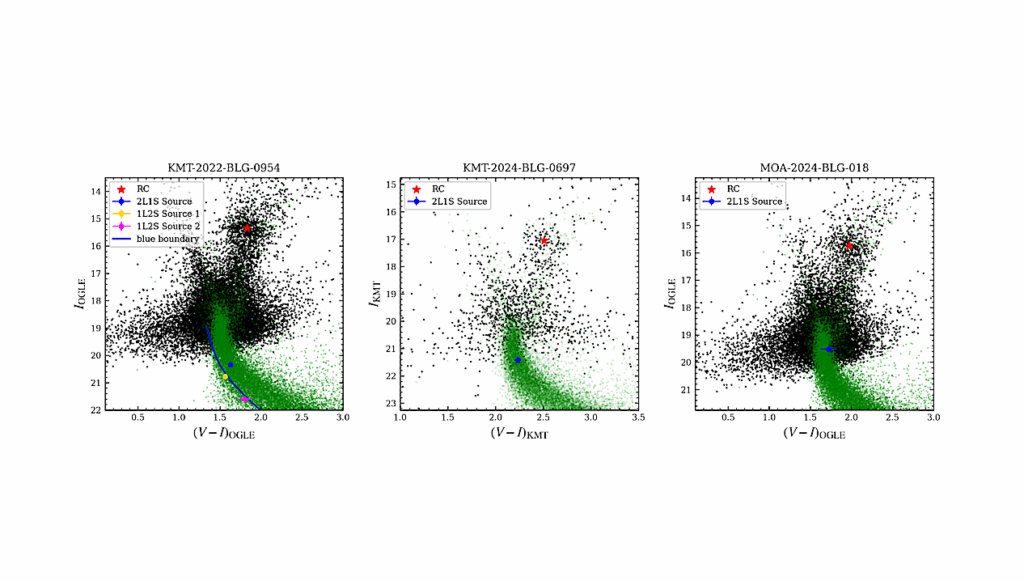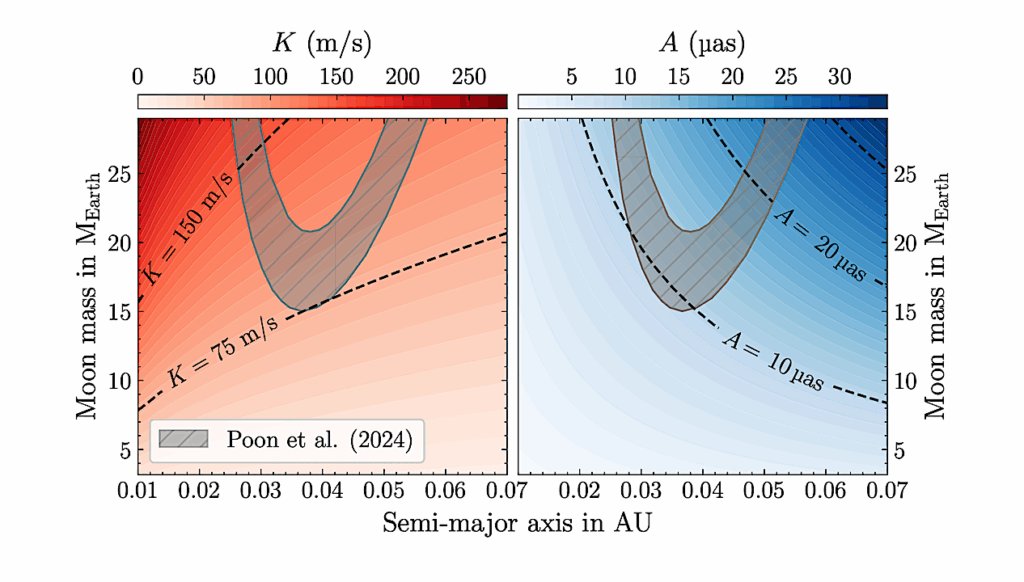A Candidate High-Velocity Exoplanet System In The Galactic Bulge

We present an analysis of adaptive optics (AO) images from the Keck-I telescope of the microlensing event MOA-2011-BLG-262. The original discovery paper by Bennett et al. 2014 reports two distinct possibilities for the lens system; a nearby gas giant lens with an exomoon companion or a very low mass star with a planetary companion in the galactic bulge.
The ∼10 year baseline between the microlensing event and the Keck follow-up observations allows us to detect the faint candidate lens host (star) at K=22.3 mag and confirm the distant lens system interpretation.
The combination of the host star brightness and light curve parameters yields host star and planet masses of Mhost=0.19±0.03M⊙ and mp=28.92±4.75M⊕ at a distance of DL=7.49±0.91kpc.
We perform a multi-epoch cross reference to Gaia DR3 and measure a transverse velocity for the candidate lens system of vL=541.31±65.75 km s−1. We conclude this event consists of the highest velocity exoplanet system detected to date, and also the lowest mass microlensing host star with a confirmed mass measurement.
The high-velocity nature of the lens system can be definitively confirmed with an additional epoch of high-resolution imaging at any time now. The methods outlined in this work demonstrate that the Roman Galactic Exoplanet Survey (RGES) will be able to securely measure low-mass host stars in the bulge.
Sean K. Terry, Jean-Philippe Beaulieu, David P. Bennett, Aparna Bhattacharya, Jon Hulberg, Macy J. Huston, Naoki Koshimoto, Joshua W. Blackman, Ian A. Bond, Andrew A. Cole, Jessica R. Lu, Clément Ranc, Natalia E. Rektsini, Aikaterini Vandorou
Comments: 21 pages, 6 figures, 4 tables, submitted to AJ
Subjects: Earth and Planetary Astrophysics (astro-ph.EP); Astrophysics of Galaxies (astro-ph.GA); Solar and Stellar Astrophysics (astro-ph.SR)
Cite as: arXiv:2410.09147 [astro-ph.EP] (or arXiv:2410.09147v1 [astro-ph.EP] for this version)
https://doi.org/10.48550/arXiv.2410.09147
Focus to learn more
Submission history
From: Sean Terry
[v1] Fri, 11 Oct 2024 18:00:01 UTC (10,812 KB)
https://arxiv.org/abs/2410.09147
Astrobiology,








